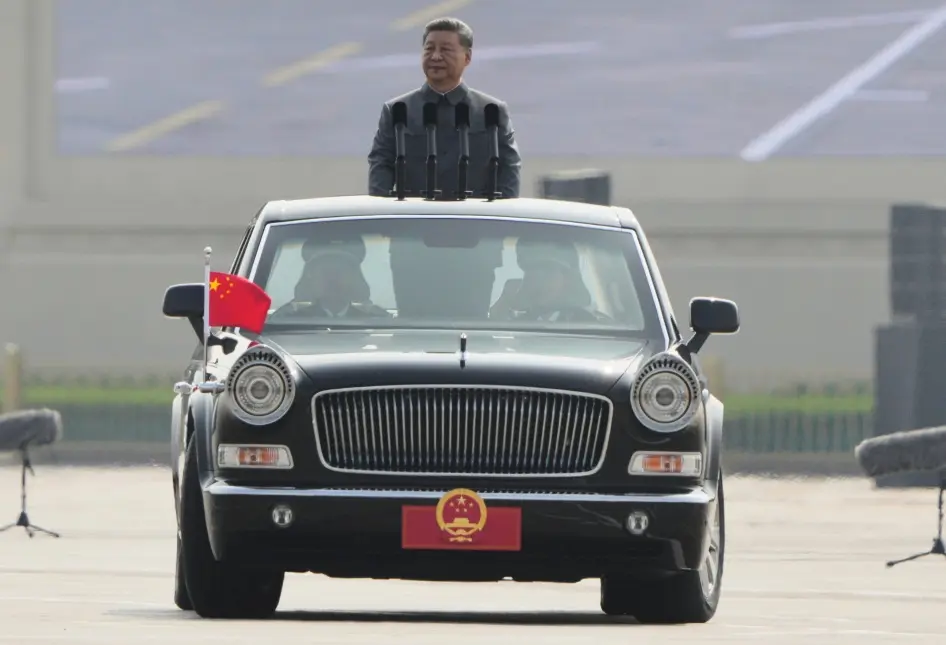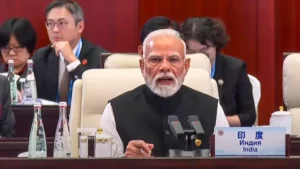Beijing’s hawkish approach in the South China Sea threatening regional peace
China recently amplified hawkish behaviour against Philippines in the South China Sea have reiterated concerns of Beijing’s imperialistic ambitions. By restricting the Philippines coast guard’s access to free navigation within the South China Sea, not only has Beijing attempted to destabilise regional peace but has openly declared its intentions to create such confrontations.
China’s Bullish strategy in the South China Sea
China forceful assertion over the waters have included sabotaging Exclusive Economic Zones (EEZ) formed by neighbouring countries around the South China Sea thus also leading to a case for arbitral proceedings against China’s claims. The decision of the tribunal has since then been rejected by Beijing which went against its illegitimate authority over the region.
Countries have also claimed that China in its attempt of altering the status quo has developed disputed reefs into artificial islands with permanent structures. These artificial islands that remained much in debate around China’s hegemonic aspirations, have been understood to be fortified as military bases over sovereign waterways of the many of the Southeast Asian countries. This has also led to the claims that China has undertaken massive land reclamation and construction activities in the disputed areas by installing military infrastructure including airstrips and missile systems in order to intimidate the region of a war-like situation over the disputed territory.
The unilateral alteration of persisting understandings, is in clear violation of sovereignty of China’s neighbouring countries. The dispute with Philippines in particular has also been aggressive regarding Spratly Islands and the Scarborough Shoal, over which Beijing claims territorial dominance. Chinese maritime forces have also been notorious in igniting conflicts with their Filipino counterparts by regularly harassing fishing boats and fishermen from Philippines, the recent examples of such cases are but few instances how Beijing is slowly gaining ground in the South China Sea by bullying regional stakeholders. The Chinese navy have also been blockading supply dispatched for BRP Sierra Madre, a World War II era warship, which currently serves as an outpost of the Philippine Marine Corps to assert its sovereignty over the disputed ownership of the Spratly Islands.
Why is South China Sea strategically important to Beijing?
The South China Sea has become an important geostrategic point in China’s hawkish foreign policy in the past decade or so. Ever since Xi Jinping came to power, his intentions have very well reflected China’s intensions to create fear among countries in the region.
Beijing has been showing greater interest within the region for various purposes. Its focus on security interests and strategic choke points have made the region all the more important for China’s foreign policy and more so in a time when Beijing is able to exert its strength through force over other countries due to its mammoth military force. Historically speaking, the two regions have had quite a turbulent past. The Chinese Communist Party have in the past has not only supported but also fuelled guerrilla movements throughout the region post their rise to power in 1949. This also then subsequently led to an alliance in the form of Southeast Asia Treaty Organisation in 1955 which culminated in the form of Association of Southeast Asian Nation (ASEAN) in 1967. The ASEAN group was at the time a bloc of five non-communist states involving Indonesia, Malaysia, Philippines, Singapore and Thailand. This has therefore made China cautious of the bloc and the region ever since then has been considered as an instrument of ‘encircling’ the Chinese state.
As far as the South-China Sea dispute is concerned, it involves many of the maritime members of the ASEAN grouping and has caused significant constraints on regional stability in the region. Countries such as Malaysia, Vietnam, Indonesia, Brunei and Philippines have had serious apprehension upon China’s illegally claimed nine-dash-line, which intrudes in to their own geographical and maritime territories. This dispute has also led to many escalations and stand-offs involving the maritime countries around the disputed area. China on the contrary has built over 3200 acres of artificial landmass and has completely militarized at least three of its artificially constructed islands in the disputed waters. The Paracel and Spratly islands have significantly enhanced Chinese offensive capabilities and has significantly extended their exclusive economic zones beyond their mainland shores and thus remains very important for Beijing enabling it to secure an unmatched edge of other countries.
South East Asia’s counter response
Prominent South East Asian countries have taken a range of measures to prevent further aggravation from Beijing’s end. Singapore, Malaysia, Indonesia, Thailand, Vietnam and others, have successfully managed to wither the Chinese tide of incursion through economic means and have rather complimented their development with that of China’s economic growth.
Southeast Asian countries, including Vietnam and the Philippines have also sought support particularly from the United States, to maintain a balance of power in the region. The U.S. on its part has provided military assistance and conducted freedom of navigation operations (FONOPs) to challenge China’s unilateral and excessive maritime claims. Washington has also invested in strengthening some of the countries naval and coast guard capabilities to protect regional interests and assert sovereignty in the South China Sea. This includes providing and upgrading their military assets. Given Beijing’s growing hegemonic aspirations, it is important that Southeast Asia is provided with enough capabilities to restrict Chinese incursions further. Like minded countries play a pivotal role in ensuring that such imperialistic tendencies do not gain momentum at the expense of a free and open navigation in the South China Sea.











